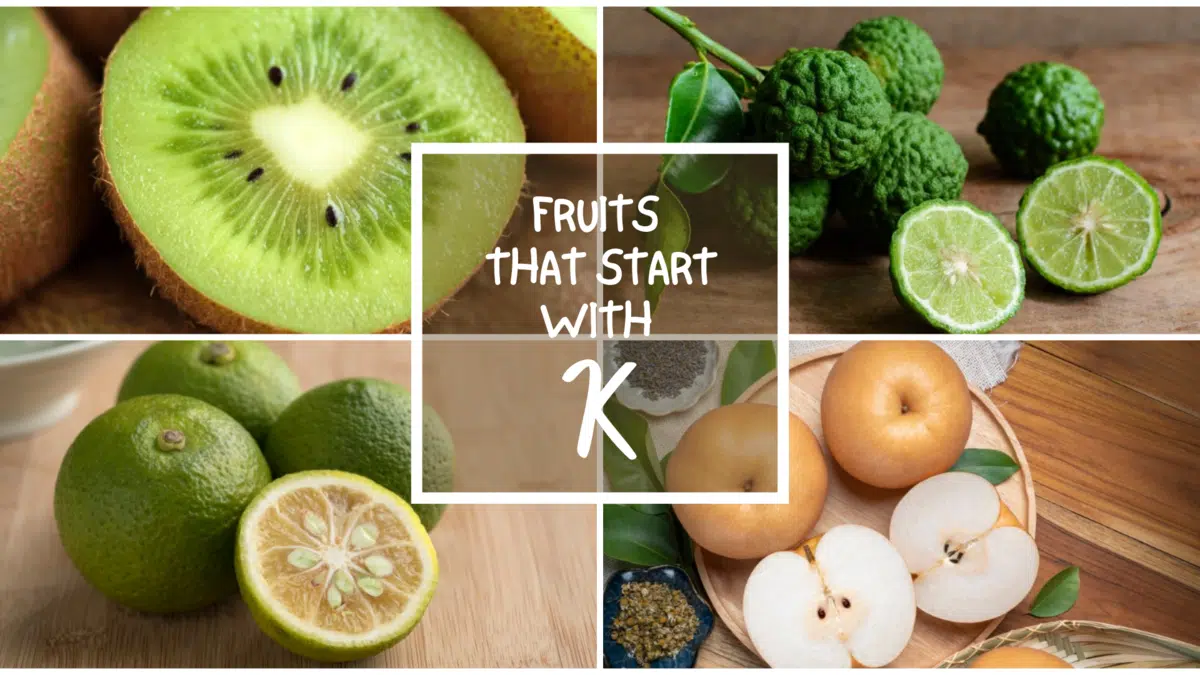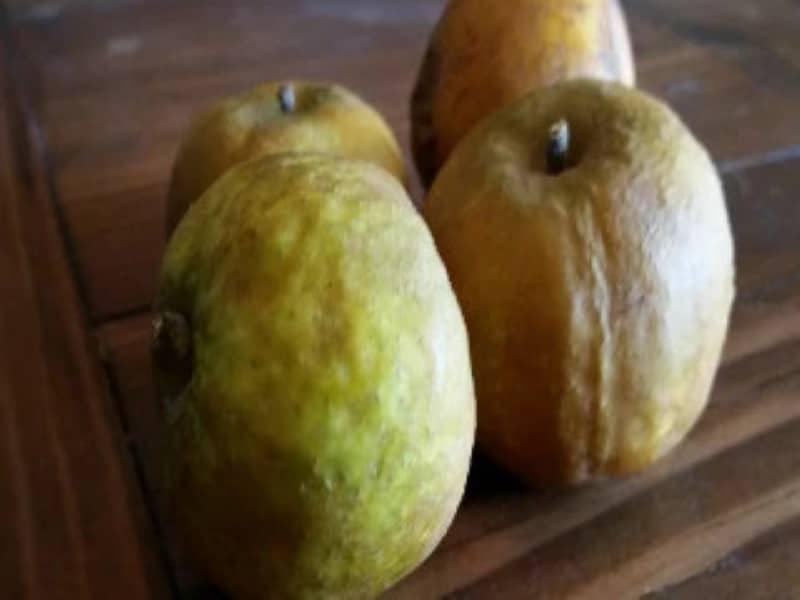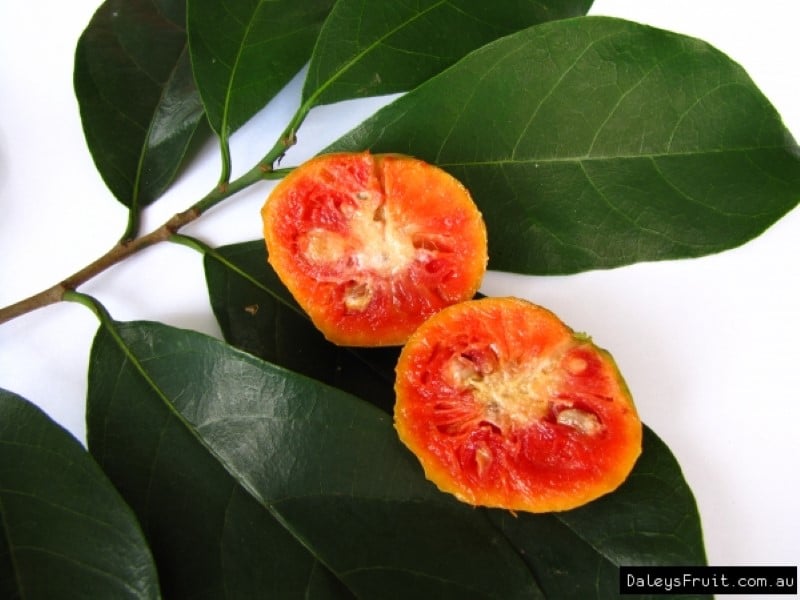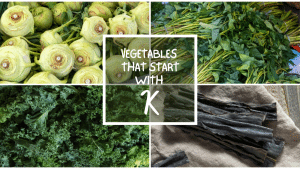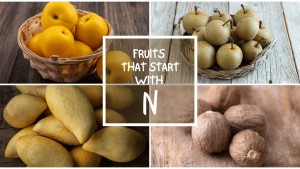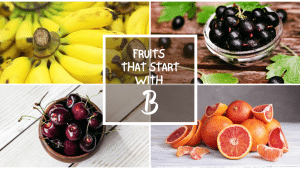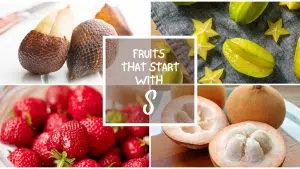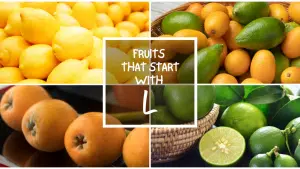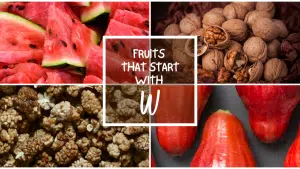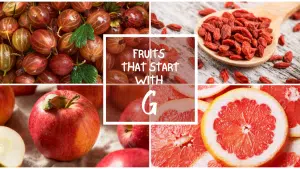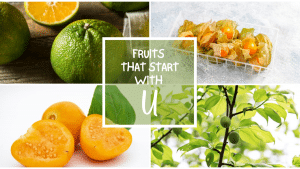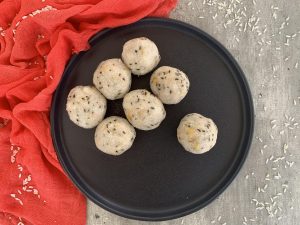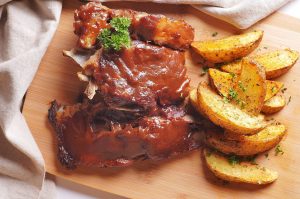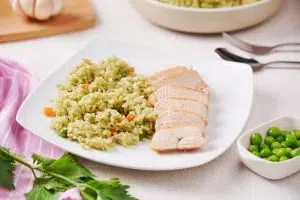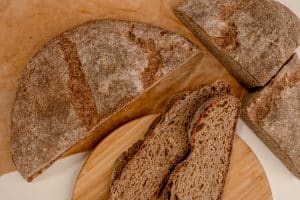All The Fruits That Start with K
Important Note: When you buy through our links, we may earn a commission. As an Amazon Associate we earn from qualifying purchases. Content, pricing, offers and availability are subject to change at any time - more info.
Welcome to this delightful list of fruits that begin with K. Herein you’ll find an assortment of tasty and nutritious fruits ranging from berries to melons and everything in between. From fruits that are perfect to eat whole to ones that make for wonderful additions to your favorite treats and savory dishes, this list has it all. Whether you’re here to check out some of the world’s most exotic fruits or just looking for ways to incorporate new nutrients into your diet, this list of K fruits is a good one! Have a look-see.
- Kabosu
- Kaffir Lime
- Kantola
- Kei Apple
- Keitt Mango
- Kepel
- Key Lime
- Kiwi
- Knobby Russet Apple
- Korean Pear
- Kowai
- Kumquat
- Kundang
- Kutjera
- Kwai Muk
- Kabocha Squash
- Karamela
- Korlan
- The Final Letter
Kabosu

This popular Japanese fruit, known to the science community as Citrus sphaerocarpa, is a citrus tree fruit. Though kabosu is most popular in Japan, it originated in China. Although some bottled kabosu juices can be purchased in the US via online retailers, the fruit, in its whole form, is not available domestically.
Kabosu is similar in size and shape to a standard lime, however, its rind is a darker shade of green. Kabosu has pulpy flesh that is citrusy, acidic, and subtly sweet in taste while it smells more floral than anything. Though it can be eaten whole, it’s more common to juice it as an additive to sweeter flavor profiles. Moreover, kabosu is often used to enhance savory fish and hot pot dishes. Besides as an acidic ingredient, kabosu skins can be used as mosquito repellants. Furthermore, kabosu is packed with nutrients such as folate, vitamin C, and potassium.
Kaffir Lime
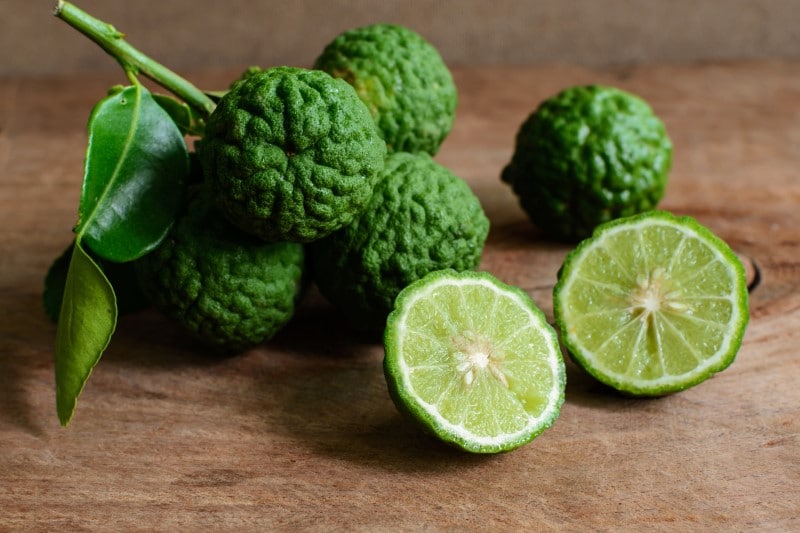
The Citrus Citrix, or kaffir lime, is native to the tropical climates of Southeast Asia and southern China. Kaffir limes are commercially cultivated in New Zealand and Thailand. Although kaffir limes aren’t grown for trade in the US, home growers in states such as California, Arizona, Louisiana, and Florida can successfully grow kaffir lime trees.
Kaffir limes are similar in shape, size, and color to standard limes and their texture is entirely lumpy, kind of like a gourd. Both the pulp of the kaffir lime and its leaves are edible; its flavor is a bit sour and very citrusy with floral undertones. A key ingredient in Chinese and Thai cooking, the kaffir lime accentuates sweet and savory dishes such as coconut soup or fish curry. Lastly, kaffir lime is comprised of nutrients such as essential oils and vitamin C. Kaffir lime has long been used in herbal remedies for improved oral hygiene, detoxifying blood, and digestive health.
Kantola
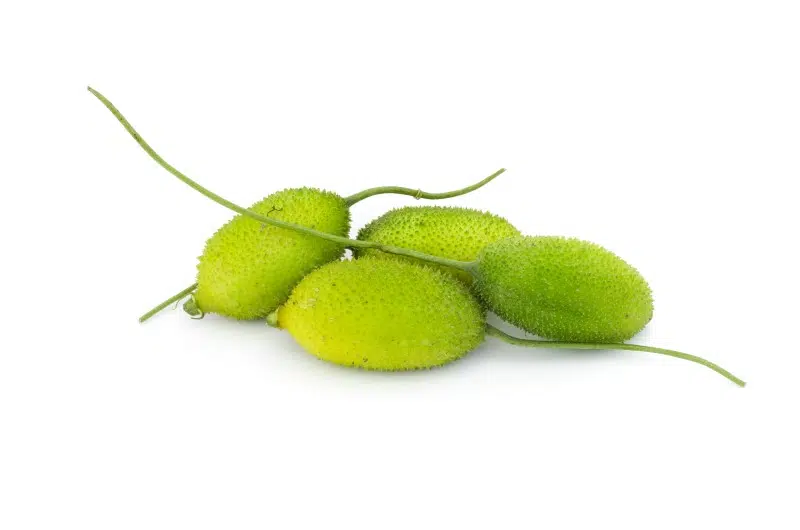
This flowering fruit is a relative to the gourd family and is scientifically called Momordica dioica. The kantola is commonly grown in parts of India and Southeast Asia. Although kantola isn’t grown commercially in the US, home growers can certainly try their hand at cultivating these spiny gourds. Successfully growing kantola necessitates sandy soil and hot summer weather.
Concerning their unique appearance, kantola is similar in shape, size, and color to an avocado, however, their texture is much different. The kantola is covered in spiny protrusions that make it look like Pinhead from “Hellraiser.” Typically, Kantola isn’t eaten whole, instead, it’s commonly used in Indian cuisine as a vegetable. Kantola is usually sauteed with spices and sometimes fried as an accompaniment to the main dishes. Finally, kantola is a great source of vitamin C, amino acids, phosphorus, and potassium. As such, kantola is known to reduce blood pressure, prevent infection and kidney stones, and improve eyesight.
Kei Apple
Kei apples, which are scientifically classified as Dovyalis caffra, are indigenous to southern Africa. These apples are named so for the Kei River that they were first discovered growing adjacent to. Though they’re called apples they’re actually a small berry that grows on bushes and trees. Furthermore, although Kei apples can be purchased from online fruit dealers, they do not grow in the US nor are they commercially imported.
Kei apples are small berries ranging in size between two and five centimeters, roughly the size of a grape tomato. They are round and bright yellow with smooth tomato-like skin. Kei apples can be very tart however they have sweet, tropical undertones. Typically, Kei apples are eaten fresh or sprinkled with a pinch of sugar to counterbalance their tartness. Kei apples can also be made into jams, used in sweet pastries, or even pickled. Of note, Kei apples are a superior source of vitamin C and antioxidants, both of which are known to reduce inflammation.
Keitt Mango

The Mangifera indica ‘Keitt,’ more commonly known as the Keitt mango, originated in Florida though it is also commercially cultivated in California, Israel, South Africa, and Mexico too. Because the Keitt mango hails from particular regions of the US, it’s easily procured in grocery stores throughout the country.
The Keitt mango is a large, oval-shaped, tropical fruit with a firm, green skin, and soft golden flesh. The flesh of the Keitt mango is buttery smooth and super sweet with notes of honey and lemon. The Keitt mango is most commonly enjoyed fresh, though it is also blended into smoothies, added to yogurt, and mixed into salads. Other common Keitt mango recipes include mango chutney and salsa. What’s more, the Keitt mango is a good source of fiber, protein, calcium, and vitamins A, C, and D.
Kepel
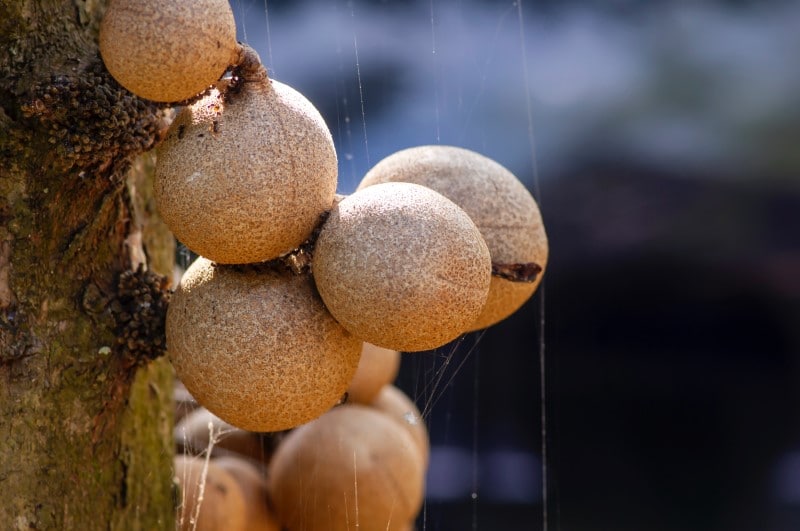
Scientifically known as the Stelechocarpus burahol, the kepel is a tree fruit that is indigenous to Indonesia. Notably, it grows year-round in many regions of Southeast Asia but does not grow commercially anywhere else in the world. The kepel tree not only yields this tasty fruit but it’s also used as an ornamental tree in Asia. Kepel fruits are imported to the US and can be found domestically in specialty grocery stores.
Kepels are roughly the size of a standard apple and have brown, inedible skin that’s akin to the skin of a kiwi. The flesh of the kepel is firm and crisp like a pear, but it has a tropical flavor with hints of papaya, mango, and coconut. Kepels are best eaten fresh though they can be found in Asian recipes such as tarts, mousses, and smoothies. Kepel is said to improve body odor and promote liver and kidney health; kepels are fraught with vitamins A and C.
Key Lime

The Citrus × aurantiifolia, or key lime, is native to Southeast Asia. Although key limes are domestically grown in tropical climes such as southern Florida, the bulk of domestically sold key limes is actually imported from Mexico and Central America. Beyond Florida, however, key limes are also grown domestically in Texas and California.
Key limes are similar in size and shape to their standard lime counterpart, however, they have a light yellow skin when ripe as opposed to a vibrant green one. Key limes are tart and bitter so they’re not typically eaten fresh. Their tart flavor profile makes them perfect for the counterbalance of sweetness they’re typically accompanied by in confections such as key lime pie, bars, cheesecakes, and limeade. Besides being a tasty splash of citrus, key limes are rich in vitamin C and antioxidants; these nutrients can aid in digestion, improve immunity, and promote skin health.
Kiwi

Kiwi, which is technically termed the Actinidia deliciosa, is also commonly referred to as kiwifruit or the Chinese gooseberry. The kiwi is indigenous to China and Taiwan but is more commonly associated with commercial cultivation and exportation from New Zealand. In the US, kiwis can be readily purchased in major grocery stores when the fruit is in season (October through May).
Kiwis are small, round tree fruits that are roughly the size of a lime. Their skin is light brown and has a rough, furry texture; the skin of the kiwi is inedible. The flesh of the kiwi, which is primarily eaten fresh, is green and juicy. They’re sweet and tangy and the center of a kiwi is full of small, black, edible seeds. Kiwis are often found atop fruit salads, in juices, and in kiwi bread. Kiwi is a wonderful addition to a balanced diet, containing high levels of vitamin C and proteolytic enzymes which are said to aid in digestion, gastrointestinal ailments, and even irritable bowel syndrome.
Knobby Russet Apple
This British apple variety was founded in Sussex in the early 1800s; it’s a very rare apple variety that grows in a handful of regions of the UK as well as the New England region of the US. As such, they’re easily procured in the US when in season. Speaking of the best growing season, the knobby russet apple grows in cold weather climates and is harvested in the early fall months.
The knobby russet apple is medium-sized, round, green, and has a lumpy or knobby texture. In fact, the texture of the knobby russet apple is more like a potato than an apple. The skin of this apple variety is edible and its flesh is crisp and firm like standard apples. The knobby russet apple is delicious to eat whole or atop salads and in sweet confections. Its flavor is subtly sweet and mildly tart with notes of citrus. A great source of vitamins A and C as well as potassium, calcium, and iron, the knobby russet apple is known to improve one’s immune system.
Korean Pear
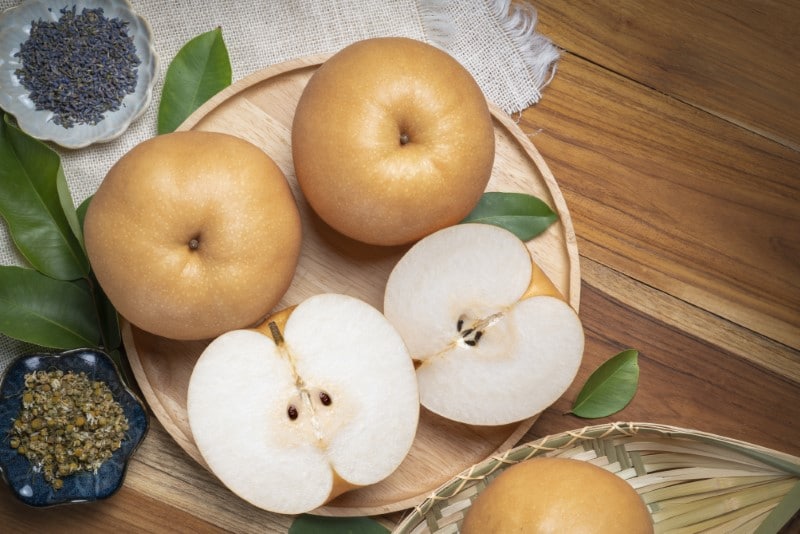
The Pyrus pyrifolia, or Korean pear, is native to, you guessed it, East Asia. This popular tree fruit goes by many names including bae, apple pear, Chinese pear, and zodiac pear to name a few of its monikers. Moreover, Korean pears are cultivated in the US as they are adaptable and easy to grow in an array of climates. As such, Korean pears can be commercially purchased in the US; though they are less common in big grocery stores, they can be delivered anywhere in the continental US from online retailers such as Amazon.
Rounder and larger than standard pears, the Korean pear has a crisp white flesh with light brown, edible skin. Unlike standard pears that soften when they’re ripe, the Korean pear is hard like an apple even when fully ripe. Korean pears have a delicately sweet and slightly tart flavor with floral undertones. Korean pears are typically eaten fresh, skin and all; they’re not typically baked into desserts. Loaded with nutrients such as fiber, potassium, and vitamins C and K, Korean pears are integral to bone and cardiovascular health.
Kowai
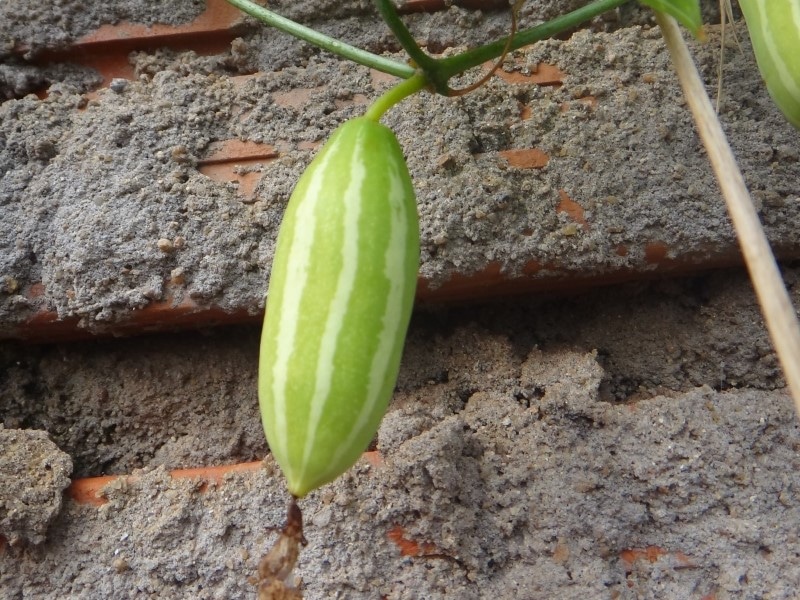
The kowai is a tropical vine fruit that goes by the botanical name Coccinia grandis; it’s also sometimes referred to as ivy gourd. Primarily harvested in tropical climates in countries like India, Philippines, Cambodia, and Myanmar. Though kowai can be successfully grown domestically in states like Florida and California, it is not cultivated commercially in the US. Like other exotic fruits, kowai can be shipped to the US though it’s not available locally.
The kowai is a gourd fruit that looks a lot like a cucumber in shape and color, though they are stumpier in length. The leaves, skin, and flesh of the kowai are all edible; the leaves can be eaten raw, however, the flesh of the fruit must be cooked down. In fact, it’s often treated as a vegetable and sauteed and seasoned as such. Lastly, kowai, which is rich in iron and vitamin B12, protects the nervous system and prevents kidney stones.
Kumquat
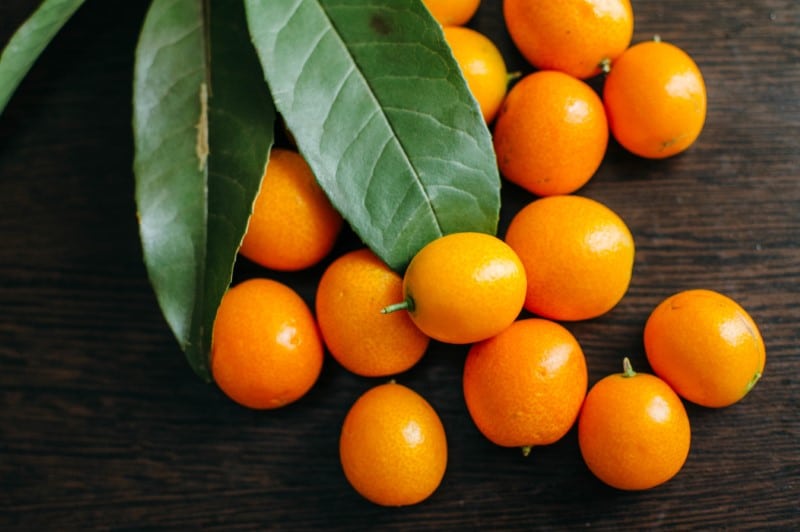
The genus Fortunella, or kumquat, is a subtropical tree fruit that is indigenous to Eastern Asia. Growing in China, Japan, Taiwan, the Philippines, and India, the kumquat was discovered long ago in the 12th century. Domestically, the kumquat grows in warm, humid climates such as Florida, Alabama, Louisiana, and California; resultantly, kumquats are readily available throughout the US when in season.
The kumquat is a citrus fruit that resembles an orange in size and color, however, they’re more oblong in shape than an orange. The texture of the kumquat’s skin is also akin to an orange’s and it’s inedible. The pulp of the kumquat is mildly sweet and overtly tangy; the seeds are edible. Kumquats are delicious to eat whole but are also found in recipes for pies, marmalades, salads, and even ice cream. Of note, kumquats are fraught with antioxidants and vitamins A and C and therefore beneficial to your overall health.
Kundang

This tropical tree fruit, native to Southeast Asia, is scientifically known as Bouea macrophylla Griffith. Commonly found in Malaysia, Thailand, and Indonesia it’s known in English as the plum mango. Unfortunately, kundang is not commercially grown in the US nor is it imported domestically.
Kundang closely resembles a mango in size and shape; its skin color is green and the orange flesh surrounds a large purple seed. Kundang is commonly eaten fresh and is edible in its entirety, skin and all. The flesh of the kundang is soft and sweet with a slight tang. Besides being eaten whole, kundang can be found canned, juiced, or dried; it’s also a common ingredient in Malaysian cuisine. High in fiber, carotene, and vitamin C, the kundang is a nutritious staple in Asain diets.
Kutjera
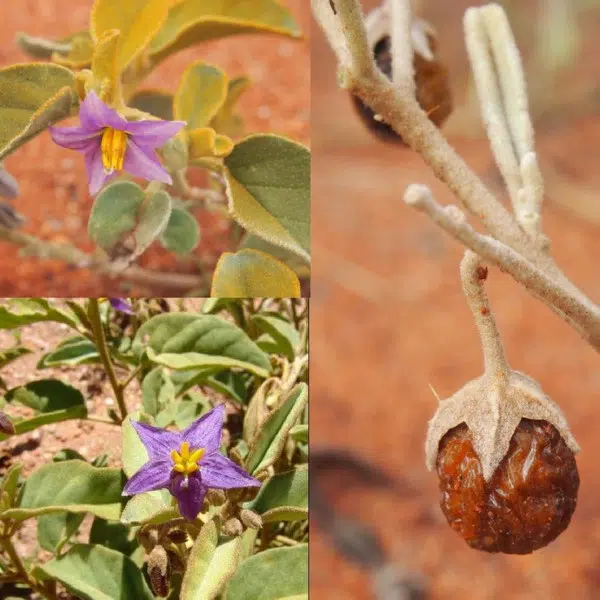
Solanum centrale, or kutjera, is native to the arid climes of Australia. Colloquially regarded as a bush tomato or desert raisin, the kutjera is not cultivated outside of Oz, nor can it be purchased in the US. Kutjera is typically planted in the spring and harvested in late fall or early winter; this fruit requires warm, arid climates to thrive.
The kutjera is a small bush fruit that resembles a golden raisin; it’s bite-sized, shriveled, and has a golden hue. Though they’re small, kutjeras pack a mighty punch; they’re highly flavorful and taste like a cross between caramel and tomato. Though they can be eaten whole, it’s common to further dry these sundried fruits and grind them into a fine, powdery spice. Kutjera is a nutritious snack that’s packed with protein, fiber, potassium, and iron.
Kwai Muk
The kwai muk, whose botanical name is Artocarpus hypargyraeus, is a small tree fruit that’s related to the jackfruit. Though it’s indigenous to China, the kwai muk also thrives in Florida and Puerto Rico where it’s commercially cultivated. Kwai muk can be purchased in specialty grocery stores throughout the US as well as shipped from online retailers.
Kwai muk is relative in size to figs and its inside resembles a mini jackfruit; its skin is soft green and it has a pale pink flesh. The soft, fuzzy skin is inedible but the flesh is incredibly flavorful and has a sweet, syrupy taste. Unfortunately, little is known about kwai muk’s nutritional value.
Kabocha Squash

Kabocha squash is a type of squash that is shaped like a pumpkin but with a smaller diameter. They are bright orange. It has long, green, bony stems. They are generally round or oblong-shaped, and they have thick rinds around them. They can be found in most countries in the world. The kabocha squash that I mentioned before was originally from China, but it has become very popular in America too. Its scientific name is Cucurbita maxima.
It tastes sweet as well as nutty and woodsy. It’s like a cross between butternut squash and pumpkin, only not as rough on the palate or as bright orange or yellow tasting as butternut squash. The taste is unique because of its mild to medium flavors. This vegetable can be eaten raw or cooked, but because Kabocha Squash tastes great when cooked, then it will be the best way to enjoy this vegetable. They have a very light, sweet, nutty scent. It is generally eaten roasted or steamed. It is a very mild flavored squash, so it mixes well with other foods. They are the main ingredient in curries, soups, and stews in Japan. They are also often used in stir-fries. It contains the amino acid L-tryptophan. This amino acid helps in relieving depression. It improves hormone secretion, increasing serotonin and melatonin levels which can lead to better sleep patterns. It also contains manganese which is great for bone growth and health.
It is commonly found in most Japanese markets as well as farmer’s markets around the country. You can find them in Farmer’s Markets and Health Food stores as well as most grocery stores in the USA.
Karamela
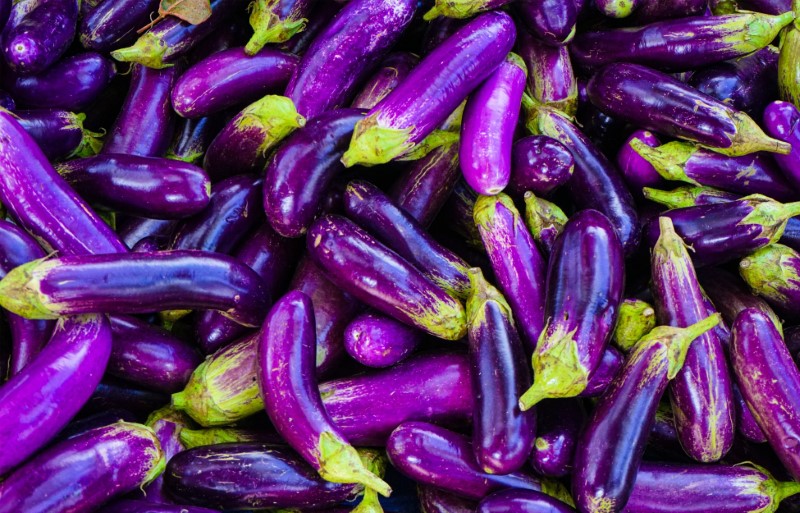
Karamela is a type of eggplant that is more purple in color versus the black-skinned eggplants one usually comes along with. It is commonly used in Greece. Its scientific name is Solanum melongena.
It is not very sweet. It has a very pungent taste to it, but that doesn’t stop anyone from eating it. It has recently been known as a vegan eggplant because of its bland taste and fleshy texture. In other words, it’s a perfect substitute for chicken, beef, or pork when you are looking for something mild-tasting like tofu or seitan. It usually grows in southeast Europe. It has a very peppery, nutty, earthy scent to it. It is quite strong and makes your mouth water just by smelling it. Without even tasting it, you can tell that this vegetable is quite delicious. It has a unique taste to it as well. On the outside of the eggplant, you will find some small or large seeds which have a very yellow color. It is very filling and has a texture that’s similar to tofu. This eggplant can be eaten raw or cooked. When cooked, it often tastes a bit bitter or nutty. It also has a bitter aftertaste to it, but sometimes when you fry it, the bitterness goes away. When you add seasoning to this vegetable, the spicy and salty flavors will bring out the best in Karamela.
Karamela Pilaf is a dish that is more popular in Greece. It’s one of the main ingredients, and it is one of the most popular dishes that they use this vegetable in. The word pilaf means rice, and the word Karamela means eggplant. This dish normally consists of rice cooked with spices and then topped with eggplant slices cooked in vegetable oil until they are browned. These two ingredients are cooked together until their flavors mingle together, creating a unique flavor that can’t be beaten. It helps with healing the intestines and cleansing the blood. This vegetable is rich in lutein, a nutrient that is good for digestion. It also helps build healthy skin and may prevent certain types of cancer. It has high contents of potassium, containing more potassium than bananas. It also contains vitamin C, Folate, and Omega-three fatty acids, which help keep cholesterol at a low level in the blood. It contains a lot of Lycopene which helps with the heart and skin health.
In the United States, It can be found fresh in most grocery stores and farmer’s markets, but they are usually very expensive compared to other types of eggplants that are visible on the market. They do come cheaper when they’re sold by the case. Usually, you can find them at most major stores, including Whole Foods Market.
Korlan
This fruit is indigenous to South East Asian countries and is known by the botanical name Nephelium hypoleucum. Growing in countries such as Malaysia and Thailand, korlan is a wild fruit that flourishes in hot, humid climates. Though korlan is not grown in the US, it can be shipped from exotic fruit distributors.
The korlan is a red, oval fruit that grows in clusters on evergreen trees; it looks much like a lychee. Korlans are typically eaten whole; they have an overt sour taste with a subtly sweet aftertaste. Sometimes korlans are sprinkled with sugar and other times dipped in condiments such as fish sauce. Packed with vitamins and antioxidants, korlans are said to regulate blood sugar and reduce stress.
The Final Letter
Undoubtedly, fruits are an integral source of nutrition for a well-rounded diet. Many of these amazing K fruits can provide you with your daily doses of vitamins, antioxidants, minerals, and beyond. A tasty way to supplement your diet with nutritious delectables, the K fruits are a must-try list of crops.
